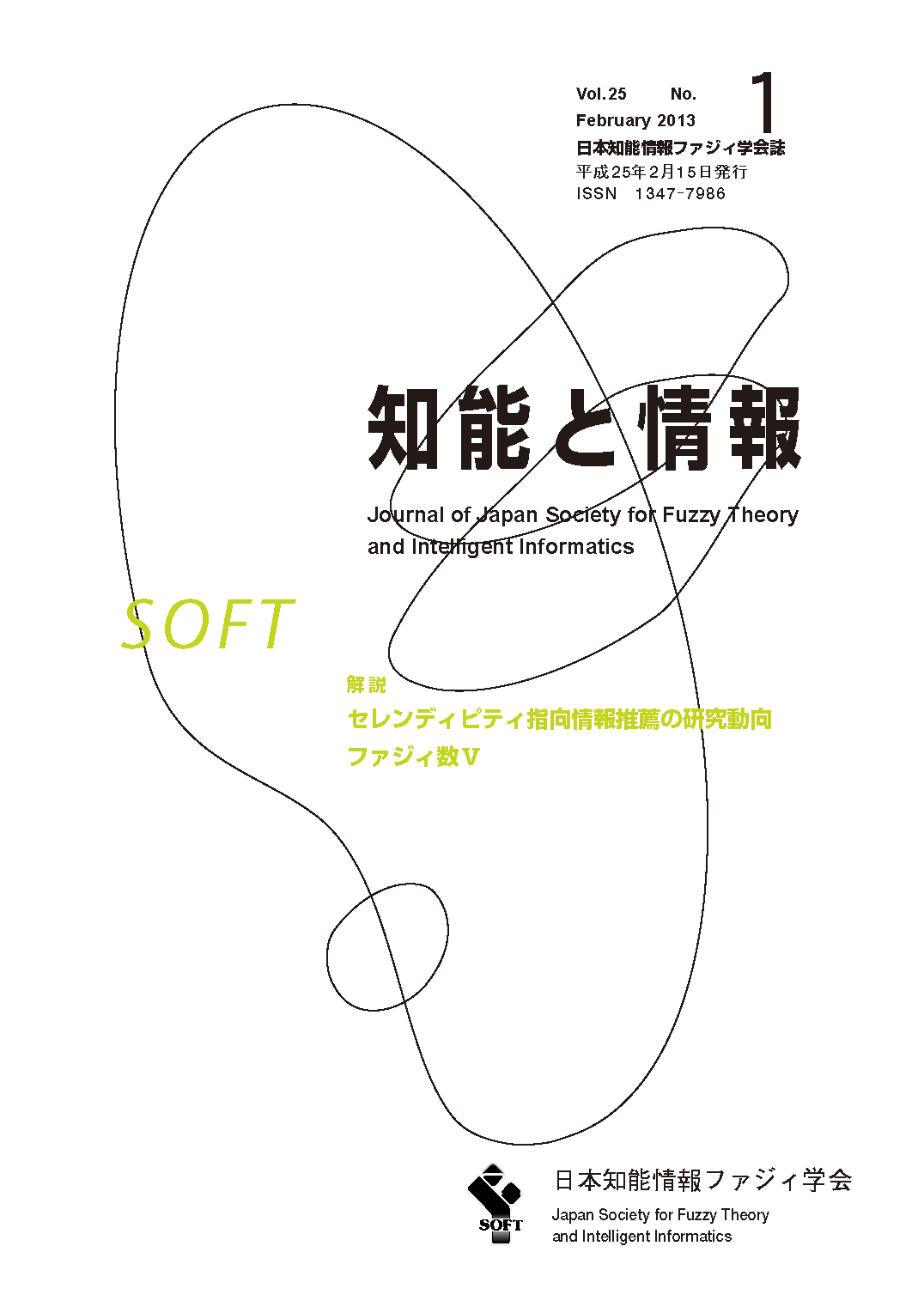Volume 25, Issue 1
Displaying 1-25 of 25 articles from this issue
- |<
- <
- 1
- >
- >|
-
2012 Volume 25 Issue 1 Pages toc-
Published: February 15, 2012
Released on J-STAGE: December 14, 2017
Download PDF (66K)
-
2013 Volume 25 Issue 1 Pages 1
Published: February 15, 2013
Released on J-STAGE: December 14, 2017
Download PDF (124K)
-
2013 Volume 25 Issue 1 Pages 2-10
Published: February 15, 2013
Released on J-STAGE: December 14, 2017
Download PDF (2102K) -
2013 Volume 25 Issue 1 Pages 11-17
Published: February 15, 2013
Released on J-STAGE: December 14, 2017
Download PDF (393K)
-
2013 Volume 25 Issue 1 Pages 18-19
Published: February 15, 2013
Released on J-STAGE: December 14, 2017
Download PDF (618K) -
2013 Volume 25 Issue 1 Pages 20-21
Published: February 15, 2013
Released on J-STAGE: December 14, 2017
Download PDF (597K)
-
2013 Volume 25 Issue 1 Pages 22
Published: February 15, 2013
Released on J-STAGE: December 14, 2017
Download PDF (120K)
-
2013 Volume 25 Issue 1 Pages 23
Published: February 15, 2013
Released on J-STAGE: December 14, 2017
Download PDF (106K) -
2013 Volume 25 Issue 1 Pages 23
Published: February 15, 2013
Released on J-STAGE: December 14, 2017
Download PDF (106K)
-
2013 Volume 25 Issue 1 Pages 24-33
Published: February 15, 2013
Released on J-STAGE: December 14, 2017
Download PDF (326K)
-
2013 Volume 25 Issue 1 Pages 34-35
Published: February 15, 2013
Released on J-STAGE: December 14, 2017
Download PDF (178K)
-
2013 Volume 25 Issue 1 Pages 36-41
Published: February 15, 2013
Released on J-STAGE: December 14, 2017
Download PDF (295K)
-
2013 Volume 25 Issue 1 Pages 42-43
Published: February 15, 2013
Released on J-STAGE: December 14, 2017
Download PDF (138K)
-
2013 Volume 25 Issue 1 Pages 44
Published: February 15, 2013
Released on J-STAGE: December 14, 2017
Download PDF (147K)
Special Issue: Web Intelligence and Interaction II
Original Papers
-
2013 Volume 25 Issue 1 Pages 501-510
Published: February 15, 2013
Released on J-STAGE: March 04, 2013
Download PDF (829K) -
2013 Volume 25 Issue 1 Pages 511-523
Published: February 15, 2013
Released on J-STAGE: March 04, 2013
Download PDF (1227K) -
2013 Volume 25 Issue 1 Pages 524-539
Published: February 15, 2013
Released on J-STAGE: March 04, 2013
Download PDF (2216K) -
2013 Volume 25 Issue 1 Pages 540-555
Published: February 15, 2013
Released on J-STAGE: March 04, 2013
Download PDF (3470K) -
2013 Volume 25 Issue 1 Pages 556-567
Published: February 15, 2013
Released on J-STAGE: March 04, 2013
Download PDF (1211K) -
2013 Volume 25 Issue 1 Pages 568-582
Published: February 15, 2013
Released on J-STAGE: March 04, 2013
Download PDF (1686K) -
2013 Volume 25 Issue 1 Pages 583-597
Published: February 15, 2013
Released on J-STAGE: March 04, 2013
Download PDF (1018K) -
2013 Volume 25 Issue 1 Pages 598-608
Published: February 15, 2013
Released on J-STAGE: March 04, 2013
Download PDF (3474K) -
2013 Volume 25 Issue 1 Pages 609-623
Published: February 15, 2013
Released on J-STAGE: March 04, 2013
Download PDF (2359K) -
2013 Volume 25 Issue 1 Pages 624-635
Published: February 15, 2013
Released on J-STAGE: March 04, 2013
Download PDF (1188K)
Short Notes
-
2013 Volume 25 Issue 1 Pages 636-640
Published: February 15, 2013
Released on J-STAGE: March 04, 2013
Download PDF (358K)
- |<
- <
- 1
- >
- >|
